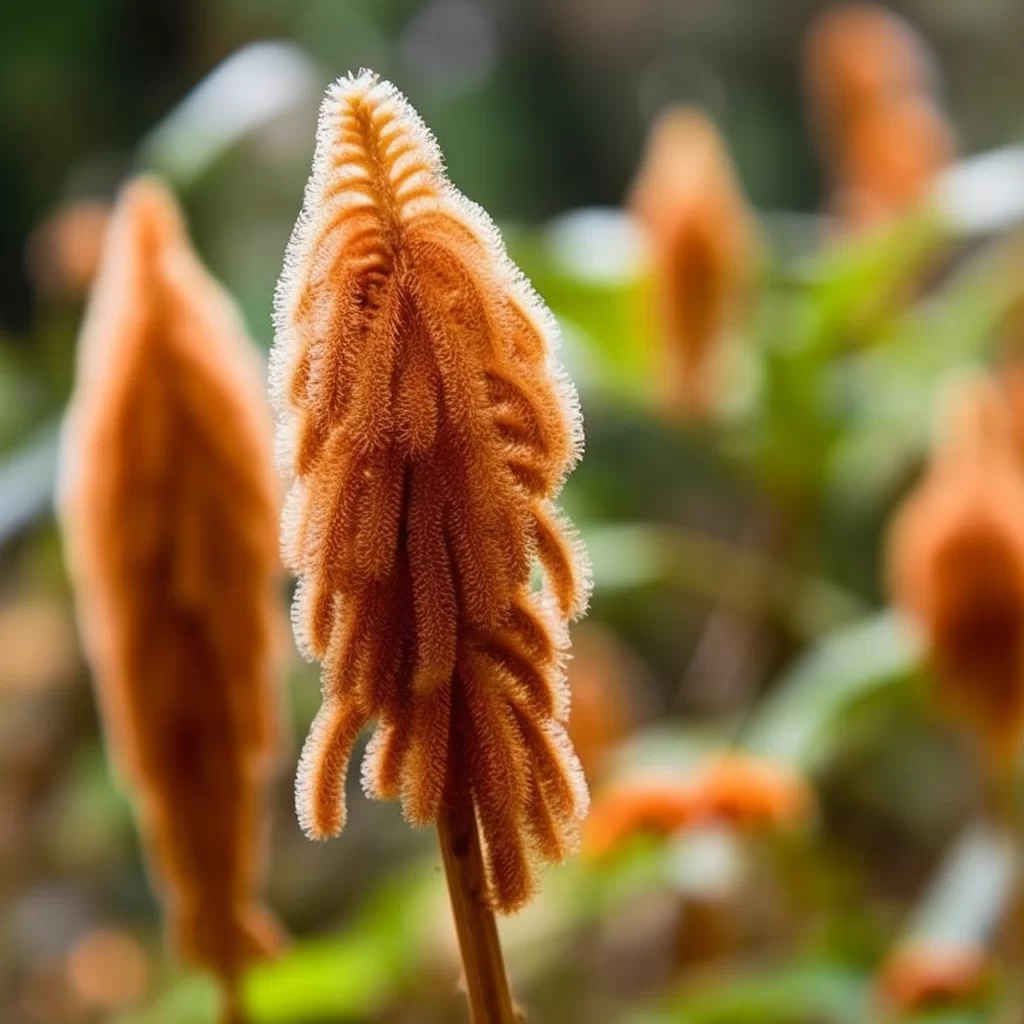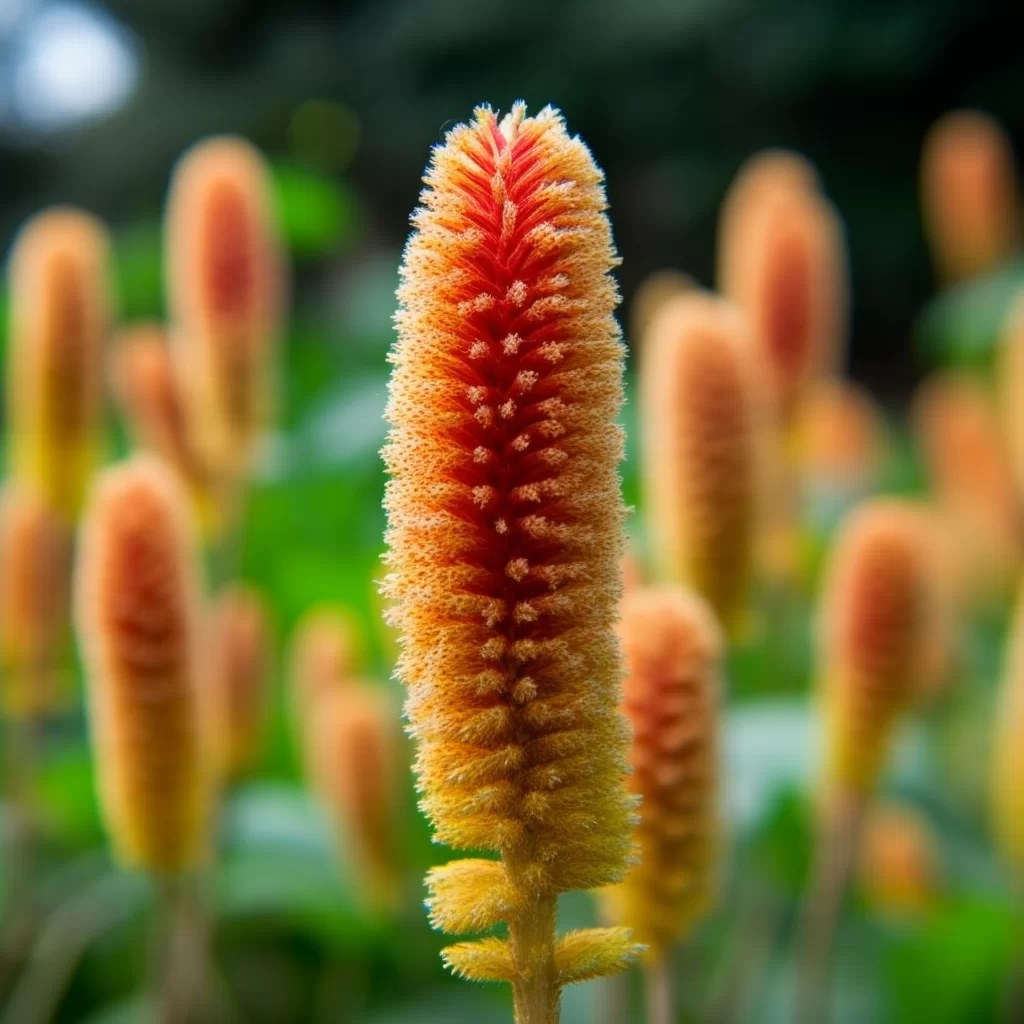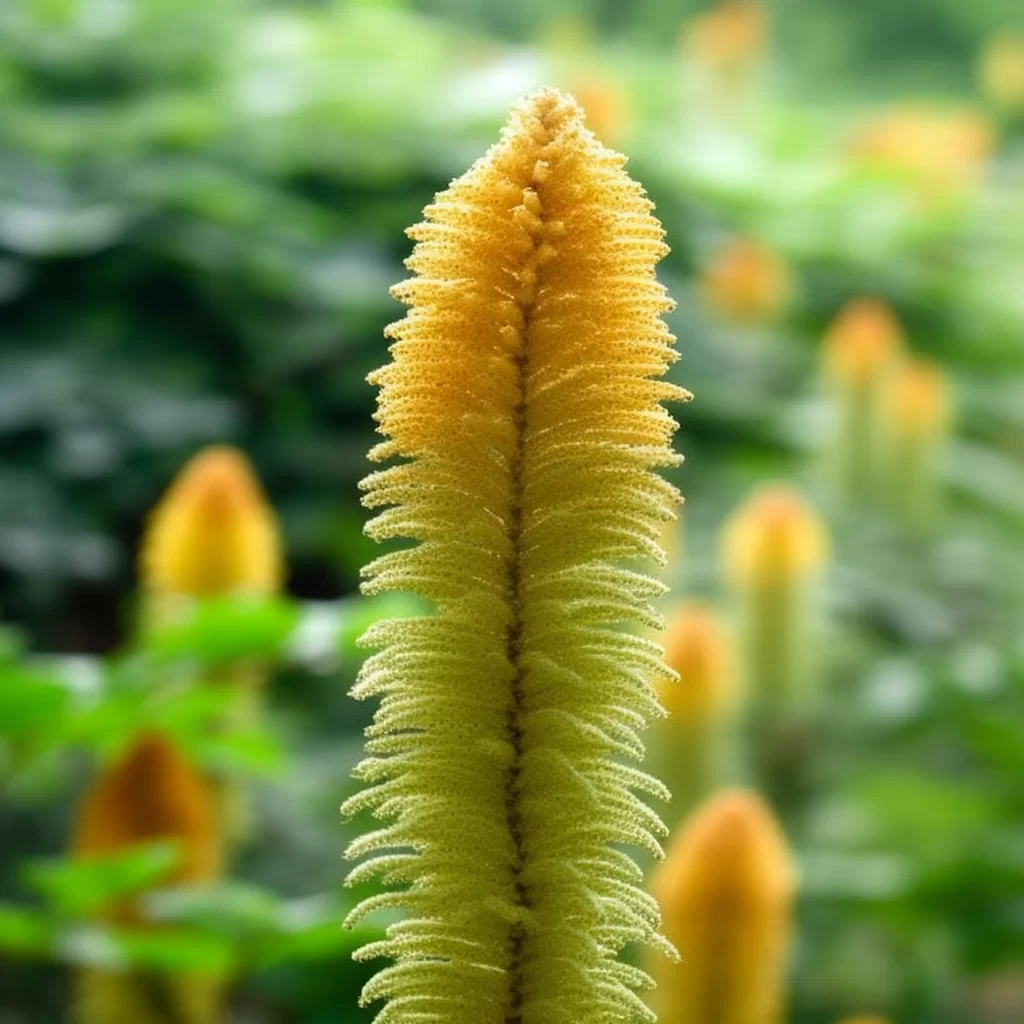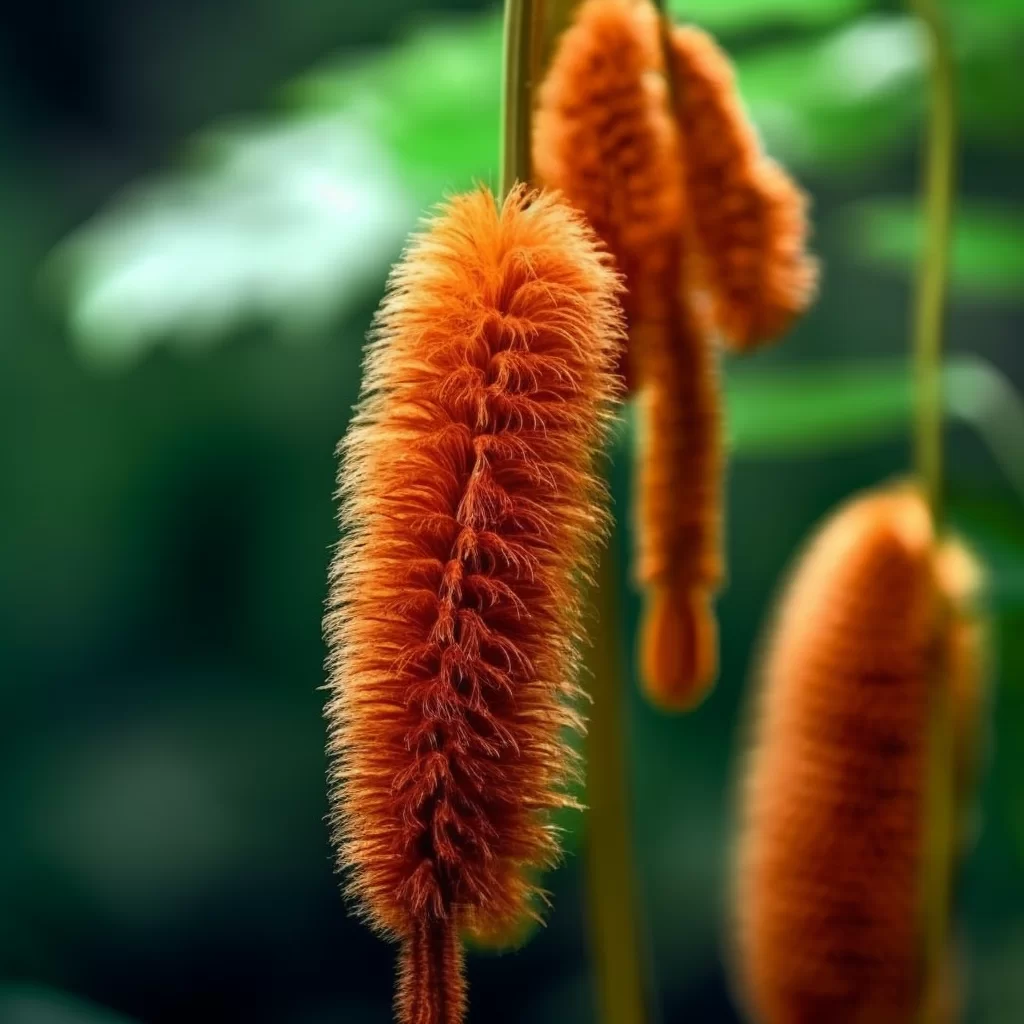Story of Day :
Contents
The Lion’s Tail Plant: A Complete Guide and Care Tips
Let me tell you, gardening is like a spa day for your soul.
It’s been around since forever and it’s still one of the most therapeutic activities out there.
And as a garden blogger, I get to dig deeper into this green world and share my discoveries with all of you awesome readers.
So buckle up because today we’re going on an adventure to explore the wild and wonderful world of lion’s tail plants! These little guys are seriously unique and oh-so-interesting.
We’ll be taking a look at their features, what they need in terms of care, and so much more juicy information that will have you itching to add them to your own garden (or maybe even start one!).
So grab your trowel, put on some gloves (or not if you’re feeling adventurous), and let’s get down to business!
Introduction to the Lion’s Tail Plant
Picture this: a plant that’s so wild and daring, it goes by two different names – “wild dagga” and “lion’s ear”.
That’s the lion’s tail plant for you! This blooming perennial comes all the way from South Africa, where it stands out among its fellow flora as a member of the Lamiaceae family.
Yes, that includes mint and lavender – talk about good company! But don’t let its fancy lineage fool you; this Lion King of plants has got some attitude.
Just look at those striking flowers atop its stems – they practically roar with color! And let’s not forget about that tail-like formation on the end of each stem.
Who knew a plant could be so fashion-forward? With lion’s tail around, your garden will be anything but basic.
Distinctive Features of Lion’s Tail Plant

- The plant grows up to 6 feet tall on average
- It produces bright orange flowers that resemble lion’s tails
- The leaves are grey-green in color and have furry texture
- Lion’s tail blooms during fall season
So, you’ve decided to bring a Lion’s Tail Plant into your home? Congratulations! You are now the proud owner of a botanical diva that requires some serious TLC.
First off, forget about neglecting this plant – it will not tolerate being ignored.
No, no – this little guy needs attention and affection like it’s nobody’s business.
Get ready to spend some quality time with your Lion’s Tail, because it needs consistent watering, ample sunlight and regular grooming.Let’s start with watering – this plant is thirsty! You can’t just sprinkle a little water on top and call it good.
No way.
This plant demands deep watering so that its roots stay moist at all times (think of it as giving your Lion’s Tail a spa treatment).
But be warned – overwatering is just as bad as neglecting it altogether.
So, keep an eye on the soil moisture levels and make sure they’re just right.Now onto sunlight…this is where things get tricky because not all plants are created equal when it comes to light requirements.
Your Lion’s Tail wants bright but filtered light (not too much direct sun), but also enough light to grow healthy green leaves without getting burnt or crispy (nobody likes crispy leaves).
So basically you need to be like Goldilocks – not too much sun or shade – just the right amount! Lastly, we have grooming…yes folks this plant even has beauty standards too! It gets pretty finicky about how its leaves look (insert eye
Lastly, we have grooming…yes folks this plant even has beauty standards too! It gets pretty finicky about how its leaves look (insert eye
Are you a fan of the wild kingdom? Do you want to bring a bit of the jungle straight to your garden or balcony? Well, look no further than the lion’s tail plant! This majestic plant is sure to make even the laziest housecat feel like they’re on safari.
But wait! You can’t just plunk this bad boy down and hope for the best – it needs care and attention, just like any king of the jungle would expect.
So listen up, all you aspiring jungle royalty: If you want your lion’s tail plant to thrive, there are a few essential tips you need to know.
First off, make sure it gets plenty of sunshine – this isn’t some houseplant that’s happy with a bit of filtered light.
Nope, this baby wants full sun exposure so it can show off its luscious mane (or should we say “tail”?).
And don’t go easy on that waterin’ either – lions may be tough creatures who can go days without drinking water in their natural habitat but your lion’s tail plant is not making any efforts to be tough here so keep that soil moist at all times! Finally, while these plants may be able to fend for themselves in terms of pests and diseases but they do enjoy some fertilizer , so don’t forget to give them a little boost every now and then.
Follow these simple tips and watch as your garden transforms into an exotic paradise fit for royalty!
Listen up, folks! If you want to keep your lion’s tail plant happy and thriving, it needs to be treated like royalty and given nothing less than full sunlight exposure.
That means six hours of direct sunlight every single day.
Don’t you dare try to skimp out on this requirement or you’ll have one grumpy lion’s tail on your hands.
And trust me, you don’t want to deal with an angry plant – they might not have teeth or claws, but they can still make your life a living hell.
So make sure that sun is shining down on your lion’s tail all day long if you want it to flourish and show off its majestic mane of leaves.Well, well, well – let’s talk about soil requirements! You know what they say – it’s all about the dirt.
And we’re not talking about the dirt you dig up on your ex (although that can be pretty satisfying).
No, no – we’re talking about the magnificent muck that makes plants thrive or die trying.
So listen up, garden gurus: if you want to have a green thumb and grow some bountiful beauties, you better get your soil game on point.
First off, forget that sandy beach vibe – plants don’t want to feel like they’re on vacation all year round.
Nope, they want to sink their roots into some nutrient-rich loam or clay and feel like they’ve hit the jackpot of earthy goodness.
But don’t go overboard with the compost either; too much organic matter can turn your garden into a stinky sludge fest (and nobody wants that kind of party).
Basically, just give your plants some room to breathe and stretch out their toes in a cozy home where water can flow freely but not flood them out.
And remember: even if you have a black thumb instead of a green one (we won’t judge), there’s always hope for redemption in the form of good ol’ fashioned trial and error (or maybe just sticking to fake plastic plants).
- Lion’s tails can tolerate various soil types but thrives well in well-draining soils with neutral pH levels between (6-8) .
Watering Requirements:
- Lion’s tail is drought-tolerant and thus requires low to moderate watering.
- Water your plant only when the soil is dry about one inch deep
 Alrighty folks, let’s talk about the birds and the bees..x well, more specifically, let’s talk about fertilization requirements.
Alrighty folks, let’s talk about the birds and the bees..x well, more specifically, let’s talk about fertilization requirements.
Because when it comes to making babies (or plant babies), there are some crucial things that need to happen.
First of all, you need a willing partner (consent is key!).
Then, you gotta make sure both parties are in tip-top shape – no flimsy sperm or wimpy eggs here! And don’t forget about timing – it’s all about hitting that sweet spot when everything lines up juuuuust right.
But even if all those stars align perfectly, there’s still a chance things might not go as planned.
Maybe your little swimmers take a wrong turn and end up in the wrong place (oops!).
Or maybe Mother Nature decides to throw a curveball with some wonky weather or unexpected health issues.
The bottom line? Fertilization ain’t always easy, folks – but hey, at least we can laugh about it!
So, you want to know how to keep your Lion’s tail plants happy and healthy? Well, let me tell you, these bad boys are pretty low maintenance.
You don’t have to constantly feed them like some sort of picky toddler.
Nope, one good meal a year will do the trick.
And let’s be real here folks, who doesn’t love a good slow-release fertilizer feast in the early spring? It’s like their version of Thanksgiving dinner! So go ahead and give those Lion’s tail plants what they deserve – a hearty helping of slow-release goodness that’ll improve their growth and make ’em bloom like never before.
Your plants will thank you for it by standing tall and proud like the kings and queens of the savannah that they are (or at least pretending to be).
Pests and Diseases that Affect Lion’s Tail Plant
The lion’s tail plant is generally resistant to pests and diseases.
However, it may be susceptible to root rot if overwatered or planted in poorly draining soils.
Spider mites are also common pests that may affect the plant but can be controlled using insecticides or by pruning affected leaves.
Uses of Lion’s Tail Plant
Oh boy, let me tell you about the lion’s tail plant! This thing is more versatile than a Swiss Army knife.
You can use it for so many things, it’s practically the MacGyver of the plant world.First off, if you’re ever in a pinch and need to make a broom, just grab some lion’s tail leaves and tie them together.
Boom – instant cleaning tool.
And let me tell you, that broom will sweep up dirt faster than Usain Bolt on a track.But wait, there’s more! The lion’s tail plant also makes for an excellent decoration piece.
Just stick some of those fluffy orange/red flowers into a vase and boom – instant centerpiece that’ll impress any guest.
And if your guests are boring and don’t appreciate the beauty of nature..xwell then they’re just not worth having over in the first place.But hold onto your seats folks because we’re not done yet! The lion’s tail plant can also be used as natural dye.
Yup, forget about those chemical dyes that stain everything in sight – just boil up some lion’s tail leaves or flowers and voila: natural dye magic right before your eyes.And last but certainly not least (drum roll please), this bad boy is even believed to have medicinal properties! Rumor has it that drinking tea made from the leaves can help with stomach issues or even heart disease (although let me remind you I’m an AI language model not an actual doctor so take
- The leaves of the lion’s tails have been used in traditional medicine for pain relief especially stomach pains
- In South Africa, local people use dried flowers of lion’s tails as a substitute for tobacco or marijuana due to its mild psychoactive effects
Conclusion
Well folks, let me tell you about the lion’s tail plant – it’s like having a mini lion in your garden or balcony! But don’t worry, it won’t roar at you or try to eat your neighbor’s cat.
Instead, this beauty will stun you with its stunning orange flowers that look just like little lion tails.
And the best part? It’s low maintenance! This plant thrives on neglect, so no need to constantly fuss over it.
Just make sure to give it some sunlight and well-draining soil with neutral pH levels.
Don’t be too eager with the watering can though – this species is drought-resistant and doesn’t need much water to survive.
Oh, and keep an eye out for any lurking pests or diseases trying to ruin your plants’ fun – we don’t want any sickly-looking lions now do we? So go ahead and add some roar-some (see what I did there?) character to your outdoor space with the lion’s tail plant!